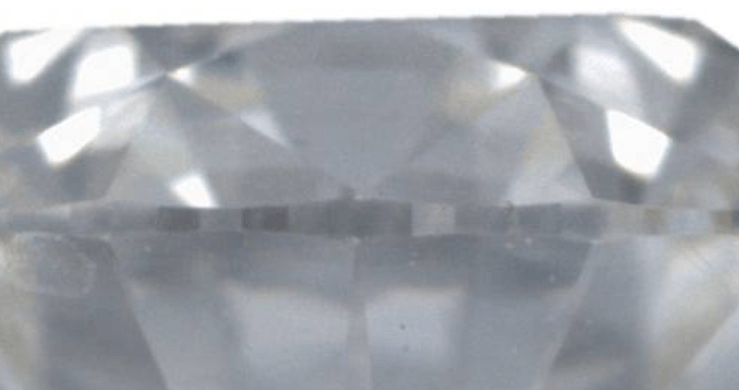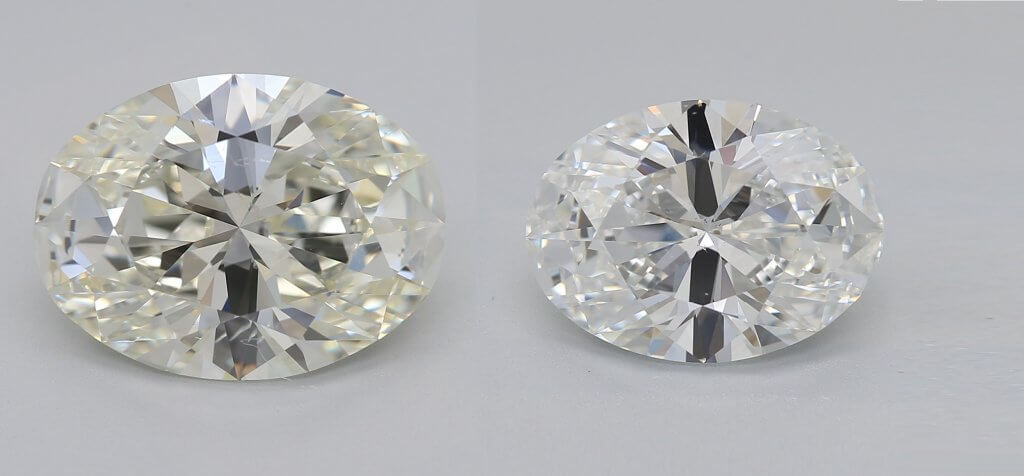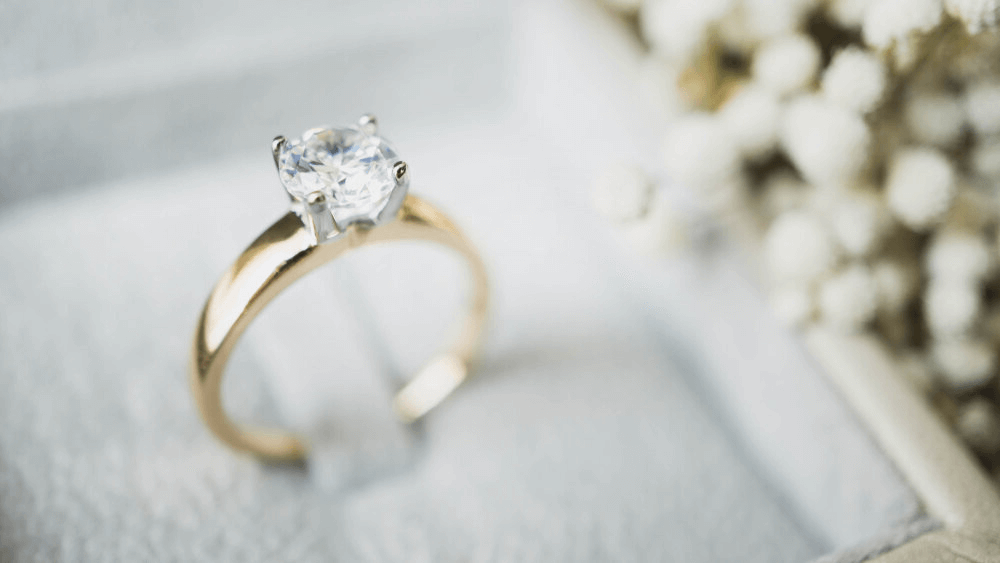The Importance of a Diamond Cut: What You Don’t Know

By Gary A.

Edited by Olivia H.
Published Oct 31, 2021
Edited on Dec 18, 2024
When it comes to choosing the right engagement ring, the brilliance and fire of a diamond cut can make all the difference in capturing the light and your heart.

- 7 Quick Tips for Examining Diamond Cuts When Buying an Engagement Ring
- Introduction
- The Basics of Diamond Cut Quality
- Ideal vs Excellent Cut Diamonds
- Understanding the GIA’s Cut Scale for Diamonds
- The Science of Brilliance and Fire (Sparkle)
- Guidelines for Choosing the Right Diamond Cut
- Guidelines for Choosing the Right Diamond Cut
- The Importance of Proper Diamond Grading
- Our Expert Take
- 11 FAQs
Before we dive deeper into the specifics, here are some practical tips to help guide your decision-making process:
7 Quick Tips for Examining Diamond Cuts When Buying an Engagement Ring
- Tip 1: Analyze Cut Grade on Certification: Prioritize diamonds with a high cut grade on their certification, especially those rated as ‘Excellent’ or ‘Ideal’. These grades indicate superior craftsmanship that enhances the stone’s brilliance and fire.
- Tip 2: Assess Brilliance and Fire: Look for diamonds that exhibit a balanced play of light, with a strong white light reflection (brilliance) and a good dispersion of colors (fire). The cut plays a crucial role in how light travels within the diamond.
- Tip 3: Examine Symmetry: Ensure that the diamond’s facets are symmetrical and well-aligned. An asymmetrical cut can result in a diamond that appears off-balance and less brilliant.
- Tip 4: Review Proportions: A well-cut diamond should have balanced proportions. A stone that is too deep or too shallow can lose light and appear less luminous.
- Tip 5: Choose the Right Shape: Different shapes like round, oval, princess, or emerald have unique cut characteristics. Round brilliants are known for their superior brilliance, while other shapes have their distinct appeal.
- Tip 6: Look for Visible Imperfections: While examining the cut, also check for visible flaws or blemishes that might impact the diamond’s appearance. A well-cut diamond should not have obvious inclusions or blemishes when viewed with the naked eye.
- Tip 7: Test in Various Light Settings: Observe the diamond in different lighting conditions. A high-quality cut should maintain its sparkle and beauty in various lighting, from daylight to artificial light.
Now that you’ve got these practical tips, use Jeweler AI below to find the perfect engagement ring that suits your style and budget:
Introduction
It doesn’t take an expert to know that diamonds do not come out of the ground looking the way they do by the time they make it to the jeweler’s table. What does take an expert, however, is recognizing the potential a rough diamond holds – and, of course, how to turn that potential into a reality.
Every diamond you come across during your search will have spent hours under a series of highly specialized tools capable of turning an unassuming, dull, and irregularly shaped stone into an impeccably proportioned, symmetrical and brilliant diamond ready to place on the finger of your future bride.
Nevertheless, just because a diamond has been cut and polished, that’s not to say it’s worthy of your money. Diamond Cut is a complex subject, and one that it is absolutely essential to understand and consider before you make any commitments.
The Basics of Diamond Cut Quality
Cut refers to a number of interrelated features, such as proportion, symmetry, polish, and depth.
Any diamond shape, from the classic Round Brilliant to the highly modern Princess, needs to be cut to some pretty specific proportions in order to create a good light performance and, put simply, to look right. A poorly proportioned Round Brilliant, for instance, could look very squat or very narrow and, even if you don’t consider yourself to be familiar with the diamond shapes, the flaws can be highly obvious.
Similarly, the process of polishing a diamond might leave some unsightly marks and flaws on the surface. The diamond’s face-up appearance might look ‘off’ due to poor symmetry or an uneven shape, or it might appear dull and lifeless alongside other diamonds due to an oversized table.
All of these possibilities – and more – are addressed within the cut category, which happens to be the first of the Four Cs every jeweler wants you to understand before you make a decision.
The Importance of Cut Quality
One of the key reasons why Round Brilliant diamonds are as popular as they are is down to the fact that they offer more sparkle than any other diamond shape. They offer truly spellbinding light performances of fire, brilliance, and scintillation and, when cut to a high standard, will appear to come to life every time the light hits upon their surface.
The key ingredient there, however, is a high standard of cut. Not every Round Brilliant diamond created is cut well – but it is essential that every Round Brilliant diamond you consider is.
We wouldn’t talk about the Four Cs as much as we do if any one of them were not important. Cut, color, clarity and carat are all going to be your top considerations throughout the diamond buying process, and none of them can afford to be relegated to the ‘Don’t Worry’ pile. That said, clarity, color and carat weight all offer much more scope for buyers looking to find a beautiful diamond that fits with their budget. For instance, while VVS1 is considered the ‘ideal’ for diamond jewelry, diamonds from the VS and SI grades can appear just as beautiful to the naked eye. Similarly, while D color diamonds can’t be beaten on paper, they can be rivalled by diamonds with color grades as low as G, H, I and J.
Cut is a little less obliging. We will always recommend shoppers stick to the Excellent and Very Good grades, and never dip below since this can have a profound impact on the diamond’s sparkle and brightness
The Difference Between Cut and Shape
No, shape refers to the specific form a diamond is cut into. A few examples of this are the Round Brilliant, the Emerald, and the Cushion – although these are often referred to as the ‘different diamond cuts.’
While the term ‘cut’ may be used interchangeably a lot of the time, it is often easy to tell the difference – primarily because cut is what’s graded within the GIA Report, while shape is merely listed as one of the diamond’s key features.
It’s also important to note that the diamond’s shape will affect how it is graded. While Round Brilliant diamonds are assigned a specific grade for cut, as well as separate grades for symmetry and polish, other diamond shapes are only assigned grades for those two features, and not a comprehensive cut grade.
The GIA studied 70,000 Round Brilliant diamonds in order to develop their methodology for assigning a cut grade to this popular shape.

Ideal vs. Excellent Cut Diamonds
When exploring diamond cuts, the terms “Ideal” and “Excellent” represent the highest standards of diamond cutting, showcasing the stone’s ability to reflect light with maximum brilliance and fire. An “Ideal” cut is often a term used by specific certifying bodies and brands to denote a cut that meets exacting standards beyond the typical “Excellent” rating given by the Gemological Institute of America (GIA). These diamonds are shaped with precise proportions and angles to optimize light return.
“Excellent” cut diamonds, the top grade in GIA’s system, also provide outstanding brilliance and sparkle but allow for slightly broader parameters. This makes them more widely available and slightly less expensive than the “Ideal” cuts. When choosing between an Ideal and an Excellent cut diamond, consider your budget and the level of brilliance you desire. Both cuts will serve as a stunning centerpiece to any engagement ring, ensuring the diamond captures every possible glint of light, but an Ideal cut offers that extra edge of perfection that might be worth the investment for those seeking the absolute best in diamond craftsmanship.
Understanding the GIA’s Cut Scale for Diamonds
Round Brilliant diamonds are graded for cut quality on the following scale:
| Excellent | Very Good | Good | Fair | Poor |
The most important thing to understand about this scale is that it covers a range of features concerning cut quality and that any Round Brilliant diamond’s cut grade is determined based on numerous components – not one single feature….
How the GIA Grades Cut
The subject of cut quality is predicated on seven factors including brilliance, scintillation and weight ratio, and the GIA takes all of these factors – and more – into account as they grade the cut quality of Round Brilliant diamonds.
Barring polish and symmetry, each of the seven factors involved in determining cut grade are noted down in order, before the lowest grade is picked out and used to determine the grade. If, for instance, the diamond receives a grade of Very Good for brightness, fire, scintillation, and weight ratio and a grade of Fair for durability, then the cut grade will be Fair.
However, if the diamond receives a grade of Excellent for brightness, fire, scintillation, weight ratio and durability, and a grade of Fair for polish and symmetry respectively, it will still be given an Excellent cut grade.
This is why it’s important to study the GIA’s full report and to know how to extrapolate the most relevant information from it.
Exploring Diamond Cut Grades
Excellent and Very Good represent the best cut grades – and the only ones we would ever recommend our readers invest in.
Unlike clarity and color, cut offers very little leeway for buyers. Yes, you can save many thousands of dollars by turning to SI2 diamonds instead of VVS1 diamonds, or by shopping from the Near Colorless grades rather than the Colorless grades but, when it comes to cut, we would never recommend taking the same open-minded approach.
The main reason behind this is the fact that a poorly cut diamond won’t sparkle as it should – and we’re willing to bet that, for you, finding a sparkly diamond is pretty much synonymous with finding a good diamond.
Also, barring the fact that dull and lifeless diamonds just don’t scream ‘romance’ like the ultra-brilliant, ultra-fiery diamonds do, a poor cut can just look off. It doesn’t take an expert to recognize a wonky circle – and, in a poorly cut diamond, that’s exactly what you see each time you look down on it.
According to the GIA, an Excellent cut grade refers to diamonds with the highest levels of brilliance and fire, while a Very Good cut grade refers to diamonds that appear to offer just about as much brilliance and fire to the naked eye.
If you go any lower on the cut scale, you’ll start to encounter a lot of diamonds with a lot less sparkle.
The Science of Brilliance and Fire (Sparkle)
Brilliance refers to white flashes of light, while fire refers to the flashes of colored light that a diamond emits – a beautiful complement to the stark, white brilliance created across the diamond’s surface.
Some people have a preference for fire or brilliance, and some cuts will offer more of one than the other. For instance, the Cushion shape tends to create more fire than brilliance. The Round Brilliant, however, creates a stunning and largely even-handed combination of the two – another reason behind its lasting popularity.
Fire, like brilliance, is not guaranteed. Round Brilliant diamonds with a cut grade of Excellent or Very Good will be capable of producing more fire than those with a poor cut or asymmetries.
The Durability of the Round Brilliant
Not only is it made out of the hardest natural substance on the Mohs scale, but a Round Brilliant diamond features a pretty sturdy shape with no sharp corners like those found on the Princess cut and Marquise cut.
However, a poor cut can make a diamond far more vulnerable to some pretty major damage, and that’s why the GIA take this – specifically, the strength offered by the girdle – into consideration when grading a Round Brilliant diamond’s cut.
The girdle is the widest part of the diamond, between the crown and the pavilion, where the facets of one are intended to line up with the facets of the other. While, away from the microscope, it may appear to come to a very sharp and precise point, this is actually considered less than ideal for a diamond of any shape, as these edges (or corners) can easily chip or crack.
An excellent Brilliant Round diamond will feature a girdle of Thin to Slightly Thick. An extremely thin girdle is simply undesirable, and the sign of a poor cut lacking vital durability.

Guidelines for Choosing the Right Diamond Cut
There’s no one way to choose a good diamond through its cut quality. You’ll have a certain amount of wiggle room for finding a good and reasonably priced diamond – just not as much as you have for color or clarity.
Consider Weight Ratio
GIA graders use a pretty complicated equation based on the diamond’s weight and average girdle diameter.
The most important thing to understand about this aspect is that no matter the diamond’s carat weight, it should always appear to represent its actual weight.
The easiest way to understand this is to consider the importance of a diamond’s face-up appearance – or, more specifically, what you see when you look straight down at the diamond’s table and crown. Since this is the part of the diamond you’ll be looking at when it’s set within a ring, it stands to reason that it’s the most important part – and not least of all because this is where most light is supposed to enter and exit the diamond for maximum sparkle.
A 3 carat diamond won’t be worth much if an overwhelming proportion of its weight is held in its lower half – the pavilion – rather than its face-up appearance. For all its extra weight, it simply won’t appear anywhere near as big as other 3 carat diamonds with better weight ratios – and won’t achieve a great sparkle, either.
For these reasons, it’s no surprise that we would never recommend anyone opt for a diamond with a weight ratio graded below ‘Very Good.’
Proportion
There is no single ‘ideal’ proportion. This is the same for every diamond shape – and the reason why the ideal cut proportions we have given refer to ranges – and sometimes multiple ranges, depending on the shape – rather than specific numbers.
This is why the GIA – and us at WillYou.com – recommend that you take a close look at the diamond’s specific measurements, and hold them up to the recommended ranges for that shape, as well as paying attention to the diamond’s cut grade.
Only by looking at both elements on the page – and, of course, the diamond in front of you – can you be sure you’re making a strong decision.
Consider Symmetry
This refers to the arrangement, sizes, angles, and number of facets found on a diamond’s surface. Unlike cut, a symmetry grade is given to every diamond graded by the GIA – not just Round Brilliants. Across the surface of a diamond with Excellent symmetry, you will notice an even display of fire and brilliance. Errors can easily lead to one side being brighter than the other.
Symmetry is graded using the same scale used to grade cut, which runs from Excellent and Very Good through Good, Fair and Poor.
A diamond’s facets are the reason it is able to sparkle the way it does. Each one is angled slightly differently to the facets on either side and, together, they ensure that a diamond is able to refract and reflect light in a way that generates a captivating light performance.
The Importance of Symmetry
It’s very important to sparkle but, as with cut, you can afford to step down to the Very Good grade rather than focusing exclusively on the Excellent cut grade.
Symmetry is arguably more important than polish – although a good polish grade also remains essential to the diamond’s beauty and sparkle – and should never be sacrificed for the sake of a lower price.
The importance of sparkle is so central to a diamond’s value that, as with cut, poor symmetry can drag down a diamond’s price substantially – typically by around 10% – 15%. As with cut, this is not an area to attempt to save money, as any savings will be reflected in the face-up beauty of the diamond.
You can read our full guide to diamond symmetry here.
Consider Polish
Polishing represents one of the final steps behind the creation of any diamond, and ensures a smooth, glassy, mirror-like finish to the diamond’s facets, as well as an even sheen across its entire surface – provided it’s done to a high standard.
The process is a little more involved than it may sound, with diamond polisher being required to hold the diamond against an abrasive disc to ensure that the facets are made as smooth and precise as possible. As a result, it’s relatively easy for the diamond to be marked, burned, or damaged.
Again, diamond polish is graded using the same scale used to grade Cut and Symmetry: Excellent, Very Good, Good, Fair and Poor.
As with many other of a diamond’s features, polish is examined under 10x magnification in order to identify any minor – or more significant – issues caused during this process.
These issues can vary from very slight abrasions during the ridges between facets – known as the facet junctions – or a vague, white ‘burn,’ to more serious issues like scratches, draglines or a granular texture along the girdle.
Unfortunately, it is possible for these flaws to cause noticeable defects on otherwise attractive diamonds – and, in severe cases, to interrupt the diamond’s sparkle, particularly if the polishing issue is located on the table or crown of the diamond.
Consider Bow Ties (in Fancy Cut Diamonds)
An unfortunate phenomenon known as the ‘bow tie effect’ is all too common in the elongated shapes of fancy cut diamonds, including the Pear, Marquise, and Oval. It presents as a dark ribbon or ‘bow tie’ across the center of the stone, which can at times be pretty difficult to ignore – a definitive dark spot within the stone.
It’s important to keep in mind that not all bow ties are necessarily bad. Yes, it comes down to personal preference, but some ‘milder’ bow ties can actually create a little extra depth within the stone that some buyers find desirable.
The more obvious bow ties are, however, a sign of poor cutting, and should be avoided.

Consider Hearts and Arrows (in Round Brilliant Diamonds)
In some Round Brilliant diamonds, an effect known as ‘hearts and arrows’ can be achieved. In diamonds featuring this phenomenon, eight ‘arrows’ can be seen across the table and crown of the diamond, and eight hearts can be seen around the pavilion when viewing the diamond upside down. It is important to note that this phenomenon can only be observed through a special viewer.
Diamonds have to feature a very precise cut in order to achieve this effect, and some cutters specifically cut their diamonds to achieve this effect.
While romantic, the high price given to hearts and arrows diamonds is generally considered an unnecessary one, since this pattern won’t be visible once the diamond is set within a ring and worn on the finger.
Consider the Culet
The diamond’s culet – or the very lowest point on the diamond, where the facets of the pavilion meet – is taken into account with regards to symmetry, as it can be off-center or out of alignment with the table. This is not the same as the diamond’s culet size, however.
While not included within the cut grade, the GIA does offer a grade for the culet, and this is found on the stone’s proportion diagram within the report.
We have put together a full guide to the culet here. For now, it’s important to understand that culets can directly impact the face-up appearance of the diamond, and create the unwanted effect of a noticeable inclusion right in the center of the diamond’s table.
Ideally, any diamond you choose will feature no culet at all. This will be identified by the word ‘None’ at the base of the proportion diagram. Even a diamond that has been cut to a high standard in every other respect can be undermined significantly by a substantial culet.
The Importance of Proper Diamond Grading
The GIA is widely considered to be the most consistent and reliable of diamond labs, offering an extremely rigorous approach to grading diamonds of all shapes for factors pertaining to cut quality – and a great level of assurance to shoppers, even if they’re brand new to the world of diamonds.
Beyond that, the only other lab we would recommend is the AGS – although even this respected organization comes second to the GIA’s methodologies.
Two diamonds with the same cut grade should not be considered equally if one has been graded by the GIA or AGS, and the other by another lab. You can read our guide to diamond certification here to find out more about this – and which labs to avoid.
Our Expert Take
Cutting a diamond creates sparkle. After all, even a poorly cut diamond will spark under the right lighting. Only the best-cut diamonds, however, will sparkle in a way that you can’t help but stare at and appreciate.
The importance cut quality holds for beautiful diamonds is undisputed – and, while it is one of the Four Cs, it’s not something you should consider to be negotiable (like clarity and color) or down to budget and personal preference, like carat weight.
A good cut is the foundation for any beautiful engagement ring. Focus on finding a diamond with a GIA report mentioning only those top two grades across the board, and you’ll be on track for a great investment.
11 FAQs
- Q: What does ‘diamond cut’ actually refer to?
- A: Diamond cut refers to how well a diamond has been shaped and polished from its raw form. It involves the symmetry, proportioning, and polish of a diamond’s facets, affecting its overall brilliance and sparkle. 2.
- Q: How important is the cut of a diamond in choosing an engagement ring?
- A: The cut is crucial as it greatly influences the diamond’s brilliance and fire. A well-cut diamond reflects light better, making it appear more luminous and sparkling.
- Q: What’s the difference between ‘cut’ and ‘shape’ in diamonds?
- A: ‘Cut’ refers to the quality of a diamond’s angles, proportions, symmetrical facets, brilliance, and finishing details, while ‘shape’ refers to the diamond’s overall outline when viewed from the top (like round, oval, or pear).
- Q: What are GIA cut grades?
- A: The Gemological Institute of America (GIA) grades diamond cuts on a scale from Excellent to Poor. This grading assesses how well a diamond’s facets interact with light.
- Q: Is an ‘Ideal’ cut better than an ‘Excellent’ cut?
- A: An ‘Ideal’ cut typically refers to the best cut in terms of proportions and angles for maximum brilliance. ‘Excellent’ is the top grade in GIA’s scale, often similar to ‘Ideal,’ but the terms can be used differently among jewelers.
- Q: What does a ‘Very Good’ cut grade mean in diamonds?
- A: A ‘Very Good’ cut grade means the diamond reflects most of the light that enters it, producing superior brilliance. It’s just a step below ‘Excellent’ in terms of quality.
- Q: Can the cut of a diamond affect its color or clarity?
- A: While cut doesn’t change a diamond’s intrinsic color or clarity, it can influence how these qualities are perceived. A well-cut diamond can appear more brilliant and mask certain clarity imperfections.
- Q: Why do some diamonds have extra facets?
- A: Extra facets are sometimes added to improve a diamond’s overall appearance or to remove surface blemishes, though they can also impact the symmetry and traditional cut grading.
- Q: How does the cut impact a diamond’s price?
- A: Diamonds with higher cut grades (Excellent/Ideal) are typically more expensive due to their superior brilliance and light performance compared to lower grades.
- Q: What should I look for when evaluating a diamond’s cut in-store?
- A: Observe the diamond’s brilliance (white light reflections), fire (scattered light into colors), and scintillation (sparkle when moved). Ensure it has balanced proportions and symmetry for maximum light performance.
- Q: What is the difference between diamond cut and diamond shape?
- A: Diamond Cut: This refers to how a diamond has been shaped, faceted, and polished from its raw form. The cut affects the stone’s symmetry, proportions, and the alignment of its facets, which in turn influences its brilliance, sparkle, and overall visual appeal. The quality of the cut determines how well the diamond interacts with light, impacting its brightness, fire, and scintillation.
Diamond Shape: Diamond shape pertains to the geometric outline or appearance of the diamond when viewed from above. Common shapes include round, oval, pear, marquise, square (princess cut), rectangle (emerald cut), and heart. The shape is a matter of personal preference and does not necessarily impact the quality of the diamond, unlike the cut which is critical for its optical properties.
Discover the perfect cut with Jeweler AI – where technology meets the art of diamond selection. Explore now and find your sparkle!
FOLLOW-UP GUIDE SERIES













